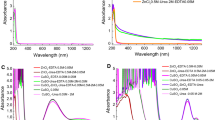Abstract
Cu2+ ion determinations were carried out in complex and in inorganic salts-glycerol media, to which increasing amounts of Cu(II) had been added, with the ion-specific Cu(II)-Selectrode. Likewise, complexing capacity of bacterial suspensions was estimated by titration with CuSO4.
Copper-sensitive bacteria, e.g.,Klebsiella aerogenes, were inhibited in their growth and survival in the range of 10−8–10−6 M Cu2+ ion concentrations. In copper-buffered complex media, high copper loads could be tolerated, as growth proceeded with most of the copper bound to medium components. In low-complexing mineral salts media, in which high Cu2+ ion concentrations exist at low copper loads, there was competition of Cu2+ for binding sites of the cells. Total allowed copper was then determined by the ratio of copper to biomass.
Copper-resistant bacteria could be isolated from a stock solution of CuSO4, containing 100 ppm Cu(II). They were of thePseudomonas type and showed a much higher tolerance towards Cu2+, up to 10−3 M.
Similar content being viewed by others
References
Baldry, M. G. C., D. S. Hogarth, and A. C. R. Dean: Chromium and copper sensitivity and tolerance inKlebsiella (Aerobacter) aerogenes. Microbios Lett.4, 7–16 (1977)
Bitton, G., and V. Freihofer: Influence of extracellular polysaccharides on the toxicity of copper and cadmium towardsKlebsiella aerogenes, Microb. Ecol.4, 119–125 (1978)
Friedman, B. A., and P. R. Dugan: Concentration and accumulation of metallic ions by the bacteriumZoogloea. Dev. Ind. Microbiol.9, 381–387 (1968)
Gadd, G. M., and A. J. Griffiths: Microorganisms and heavy metal toxicity. Microb. Ecol.4, 303–317 (1978)
Hansen, E. H., C. G. Lamm, and J. Růžička: Selectrode—The universal ion-selective solid-state electrode. Part II. Comparison of copper(II) electrodes in metal buffers and complexometric titrations. Anal. Chim. Acta59, 403–426 (1972)
MacLeod, R. A., S. C. Kuo, and R. Gelinas: Metabolic injury to bacteria. II. Metabolic injury induced by distilled water or Cu2+ in the plating diluent. J. Bacteriol.93, 961–969 (1967)
Mitra, R. S., R. H. Gray, B. Chin, and I. A. Bernstein: Molecular mechanisms of accommodation inEscherichia coli to toxic levels of Cd2+. J. Bacteriol.121, 1180–1188 (1975)
Pickett, A. W., and A. C. R. Dean: Cadmium and zinc sensitivity and tolerance inKlebsiella (Aerobacter) aerogenes. Microbios15, 79–91 (1976)
Postgate, J. R., and J. R. Hunter: Survival of starved bacteria. J. Gen. Microbiol.29, 233–263 (1962)
Ramamoorthy, S., and D. J. Kushner: Binding of mercuric and other heavy metal ions by microbial growth media. Microb. Ecol.2, 162–176 (1975)
Sillen, L. G., and A. E. Martell: In: Stability Constants of Metal-Ion Complexes. The Chemical Society, London (1964)
Author information
Authors and Affiliations
Rights and permissions
About this article
Cite this article
Zevenhuizen, L.P.T.M., Dolfing, J., Eshuis, E.J. et al. Inhibitory effects of copper on bacteria related to the free ion concentration. Microb Ecol 5, 139–146 (1979). https://doi.org/10.1007/BF02010505
Issue Date:
DOI: https://doi.org/10.1007/BF02010505




